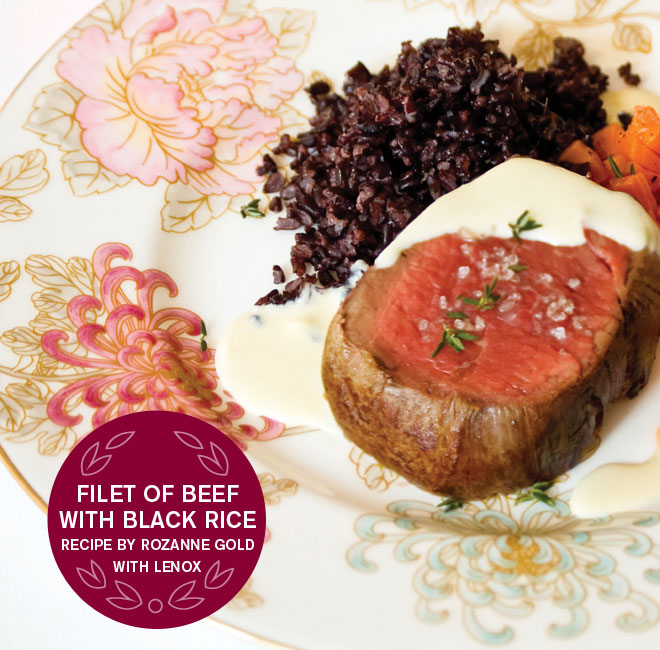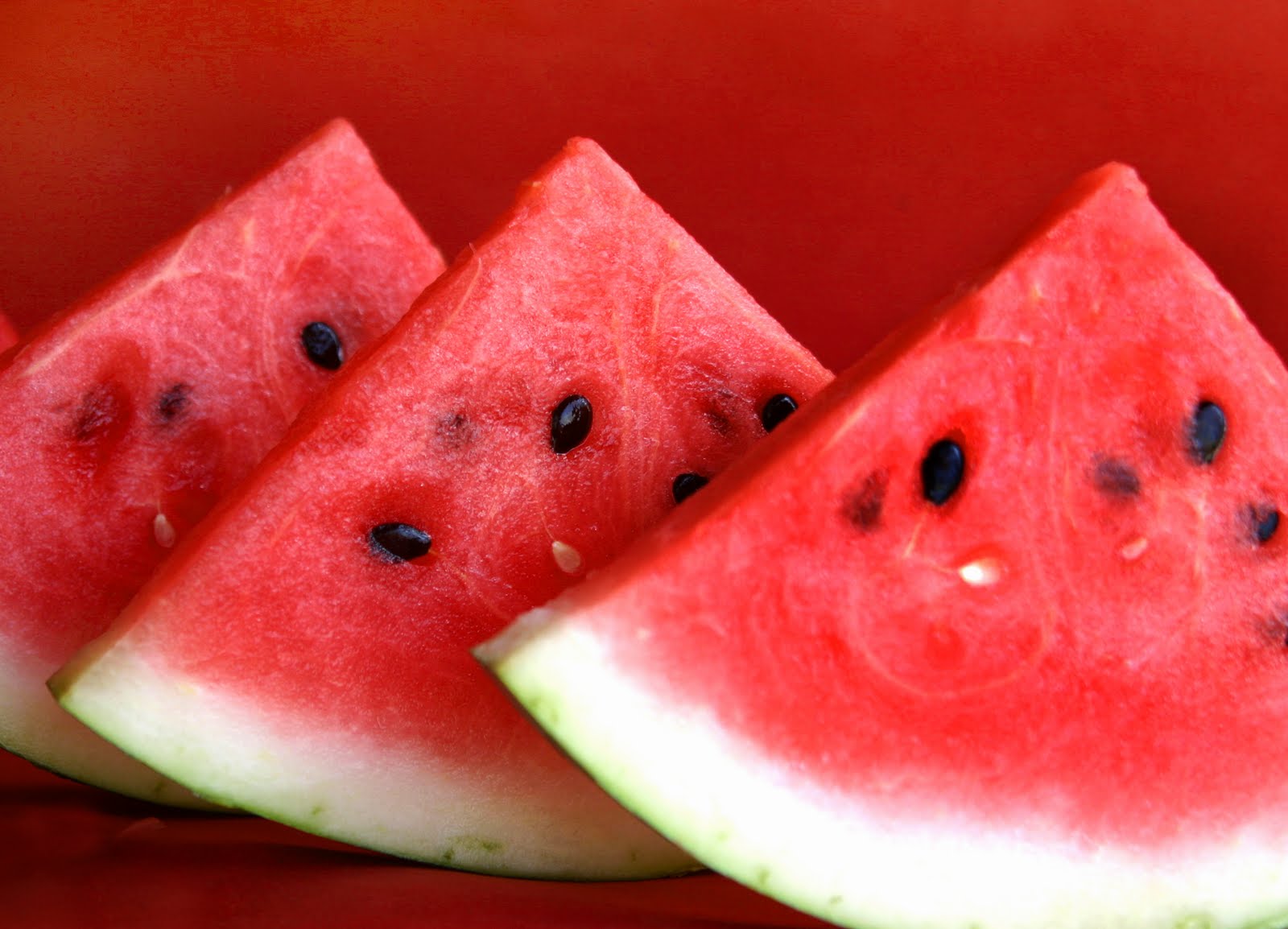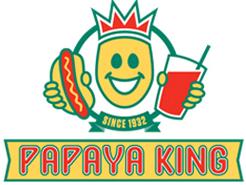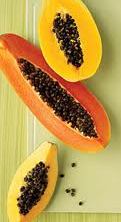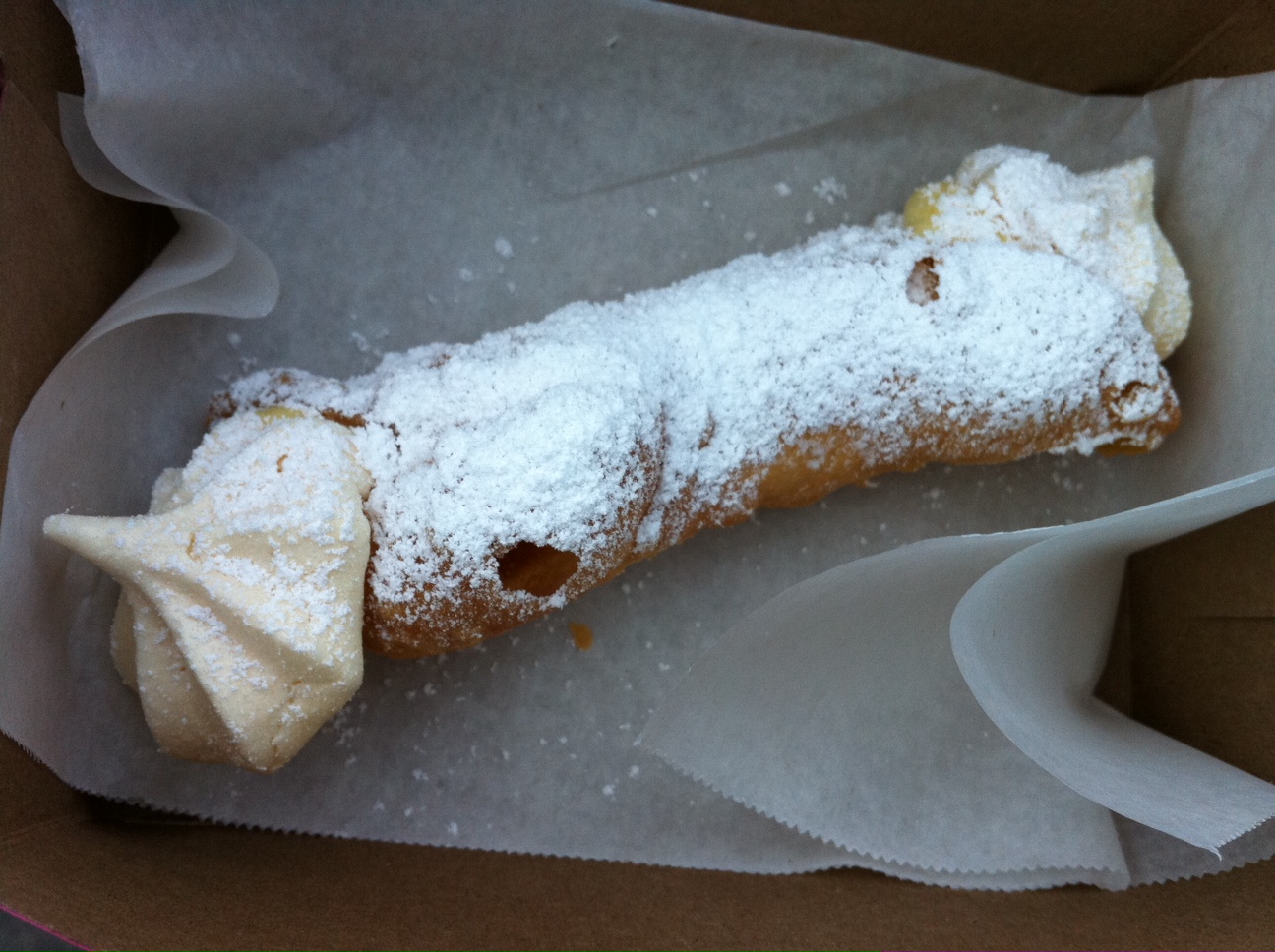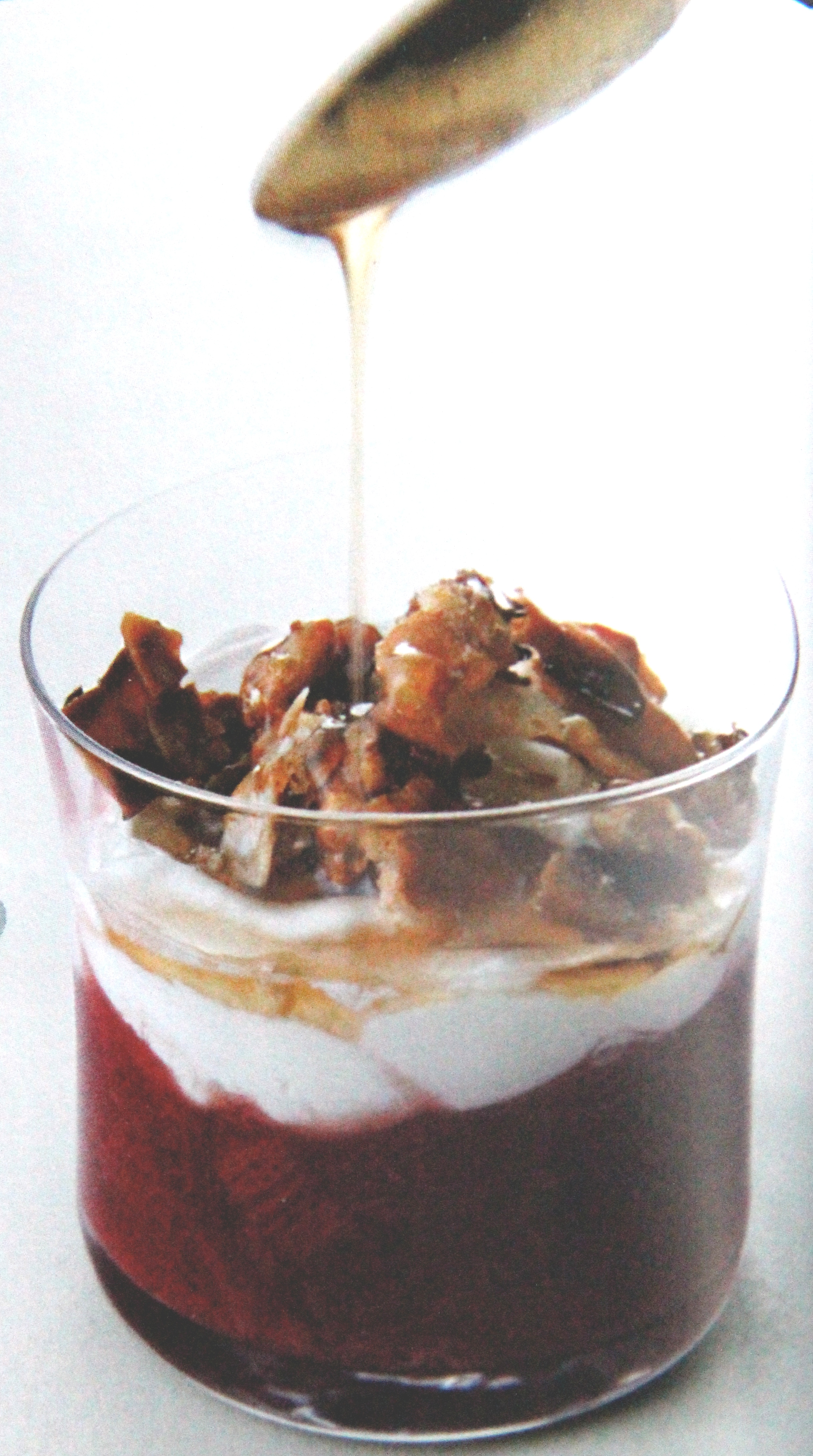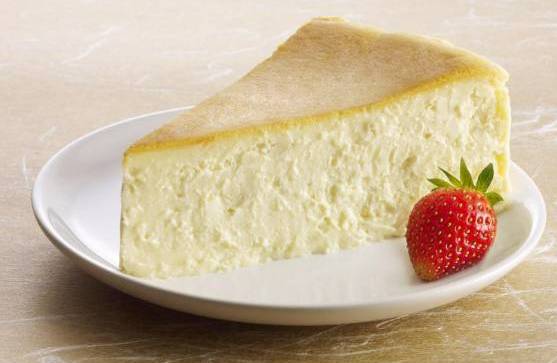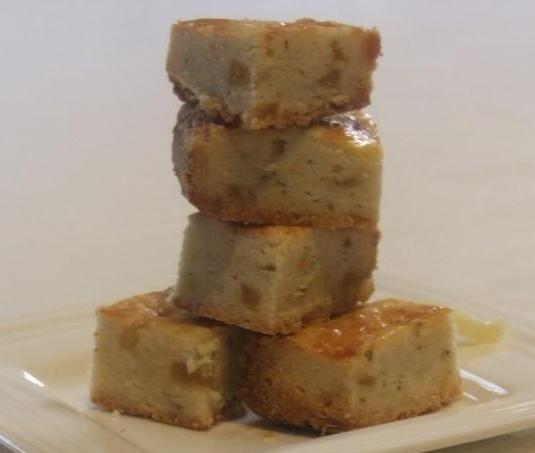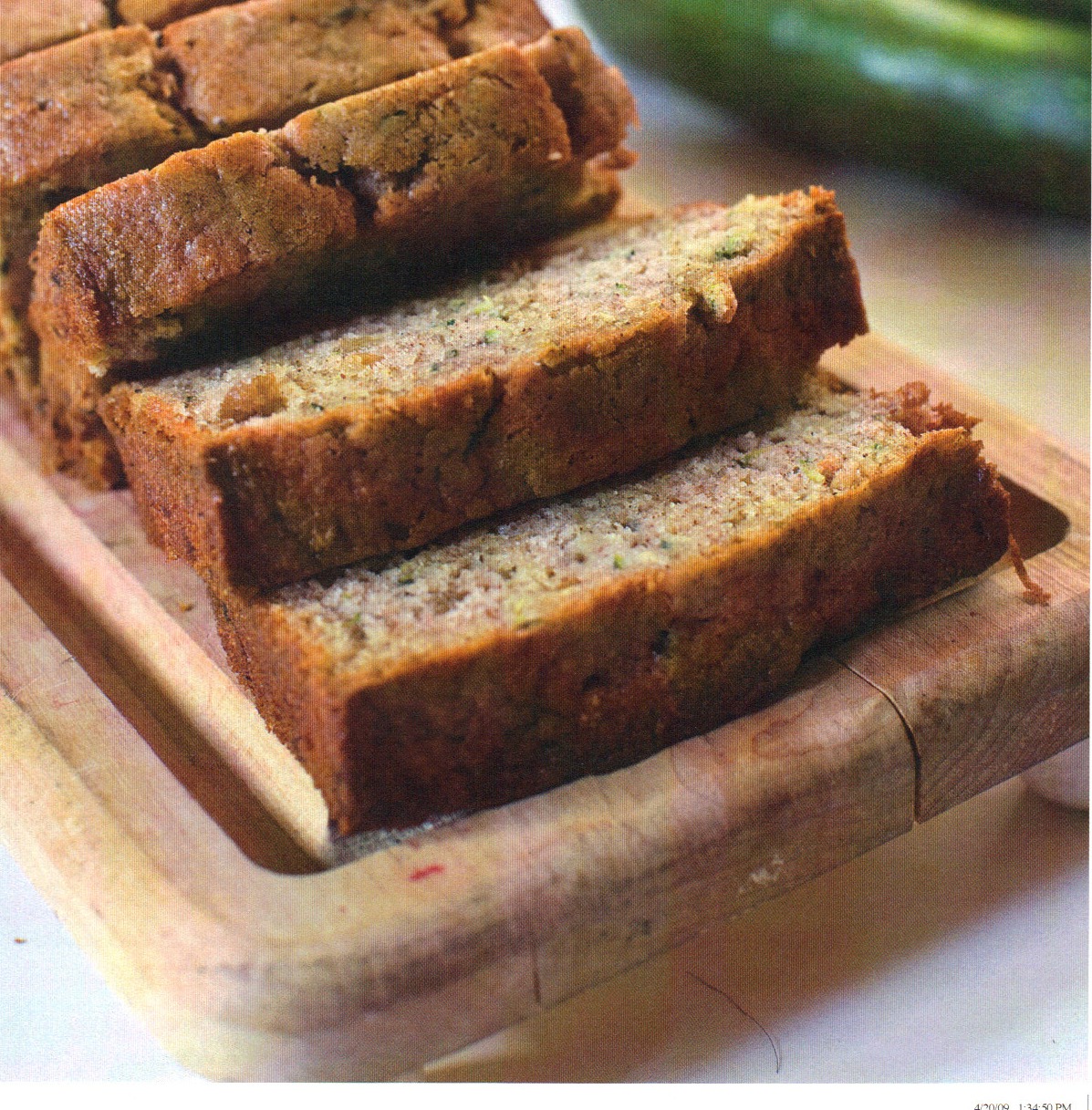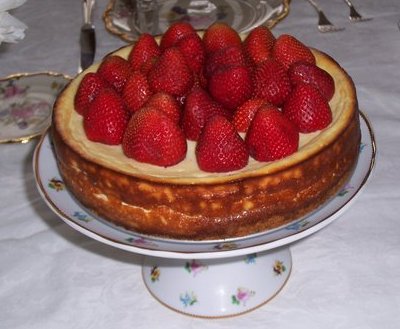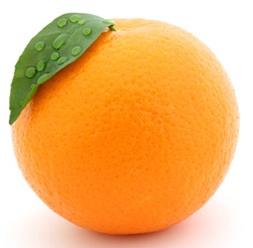 I was reminded of how much I loved ice pops as a kid the other day when I saw the cover of the magazine "Where" New York. On it was a plate of frosty-looking, colorful ice pops, beckoning me on a very hot day in the city. The image also reminded me of an article I did for Bon Appetit years ago, secreted in a computer folder called Old Docs (documents). The recipes were devised for the "new" Williams-Sonoma ice pop molds. But when I was a kid, we made ice pops in 3-ounce Dixie cups. But I do love the molded forms you can buy (some classic, some torpedo-like) and dare say you can add some booze and serve them to adults at a midsummer night's dinner.
There are ten amazing flavors from which to choose and a startling array of hues to match. Not quite the color palate of the rainbow, but close. You will want to make a different version every week to last way into Indian summer. If you add liquor of any kind, the ice pops will take longer to freeze. Don't add too much -- but a hint of peach schnapps or rum or bourbon will add untold megabites of pleasure.
I was reminded of how much I loved ice pops as a kid the other day when I saw the cover of the magazine "Where" New York. On it was a plate of frosty-looking, colorful ice pops, beckoning me on a very hot day in the city. The image also reminded me of an article I did for Bon Appetit years ago, secreted in a computer folder called Old Docs (documents). The recipes were devised for the "new" Williams-Sonoma ice pop molds. But when I was a kid, we made ice pops in 3-ounce Dixie cups. But I do love the molded forms you can buy (some classic, some torpedo-like) and dare say you can add some booze and serve them to adults at a midsummer night's dinner.
There are ten amazing flavors from which to choose and a startling array of hues to match. Not quite the color palate of the rainbow, but close. You will want to make a different version every week to last way into Indian summer. If you add liquor of any kind, the ice pops will take longer to freeze. Don't add too much -- but a hint of peach schnapps or rum or bourbon will add untold megabites of pleasure.
If you're using ice pop molds, the rule of thumb is that in order to fill 8 molds, you will need 2 cups of mixture. If using Dixie cups, put 2 ounces of any mixture into each cup; cover with foil; make a small slit in center of foil and insert wooden stick. Another tip for either procedure is to freeze the mixture 30 to 60 minutes before inserting sticks.
Frosty Lemon-Mint
Color: bright green
2 large lemons
2 tablespoons green crème de menthe
6 tablespoons sugar
2 tablespoons corn syrup
1-1/2 cups water
Grate the rinds of lemons to get 1 tablespoon zest. Squeeze lemons to get 6 tablespoons juice. Whisk all ingredients together until sugar dissolves. Pour mixture into molds. Freeze 3 to 4 hours. Makes 8 ice pops.
Summer Sunrise
Color: two-tone orange and coral
2 cups orange-peach-mango juice
¼ cup corn syrup
3 tablespoons grenadine
Put juice and corn syrup in a bowl. Stir until dissolved. Pour half of the mixture into 8 ice pop molds. Freeze 1 hour. Insert sticks. Freeze until mixture is frozen. Add grenadine to remaining mixture and pour this into molds. Freeze 3 hours longer. Makes 8 pops.
Royal Blueberry
Color: Purple-blue
1 pint fresh blueberries
8-ounces blueberry yogurt
¼ cup honey
2 tablespoons sugar
¼ cup water
Wash blueberries and put in food processor. Add remaining ingredients and process until very smooth. Pour mixture into ice molds. Freeze 3 to 4 hours. Makes 8 ice pops.
Tropicali
Color: light orange with green flecks
12 ounces mango nectar
1 cup cream of coconut
2 large limes
Place nectar and cream of coconut in bowl. Whisk until smooth. Grate rind of limes to get 1 tablespoon zest. Squeeze to get 3 tablespoons juice. Add zest and juice to mixture.
Stir. Pour into ice pop molds. Freeze 4 hours. Makes 8 ice pops.
Strawberry Blast
Color: bright red
6 ounces strawberry daiquiri mix
12 ounces pineapple juice
3 tablespoons honey
¼ teaspoon rum extract
Place ingredients in a bowl. Whisk until smooth. Pour mixture into ice pop molds. Freeze 3 to 4 hours.
Lemon-Buttermilk (“tastes like cheesecake”)
Color: white (with yellow flecks)
2 large lemons
3/4 cup superfine sugar
1-2/3 cups buttermilk
pinch of salt
Grate rind of lemons to get 2 tablespoons zest. Squeeze lemons to get 5 tablespoons juice. Put zest and juice in a bowl. Add sugar and salt. Stir to dissolve. Add buttermilk and stir until smooth. Pour mixture into ice pop molds. Freeze 4 hours. Makes 8 ice pops.
Watermelon Lemonade
Color: pale red
2 packed cups finely diced ripe watermelon
6-ounces frozen lemonade concentrate
3 tablespoons superfine sugar
pinch of salt
Place ingredients in bowl of food processor and process until very smooth. Pour mixture into ice pop molds. Freeze 3 to 4 hours. Makes 8 ice pops.
Honeydew Kiwi
Color: jade green with little black seeds
2 packed cups finely diced ripe honeydew
2 medium kiwi, peeled and diced
1/2 cup corn syrup
2 tablespoons lime juice
Place ingredients in bowl of food processor and process until very smooth. Pour mixture into ice pop molds. Freeze 3 to 4 hours. Makes 8 ice pops.
Fudgy Ice Pops
Color: chocolate-y brown
8 ounces vanilla yogurt
½ cup corn syrup
2 ounces semi-sweet chocolate, melted
3 tablespoons cocoa powder
½ cup water
Place all ingredients in bowl of food processor and process until very smooth. Pour mixture into ice pop molds. Freeze 4 hours. Makes 8 ice pops.
Cranberry “Tea-sicle”
Color: clear dark ruby
2 Red Zinger tea bags
3 tablespoons sugar
6 ounces frozen cranberry concentrate
optional: 1-2 tablespoons red wine
Boil 1-1/2 cups water and put in bowl. Add tea bags and let steep 5 minutes. Remove tea bags. Stir in sugar to dissolve. Add cranberry concentrate and wine. Stir. Pour mixture into ice pop molds. Freeze 4 hours. Makes 8 ice pops.



